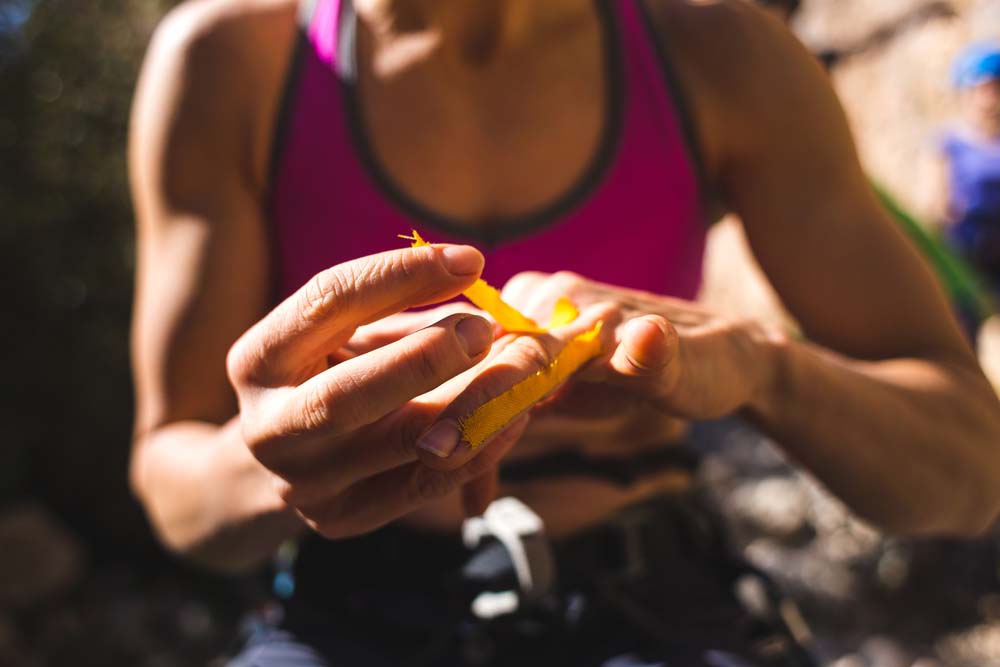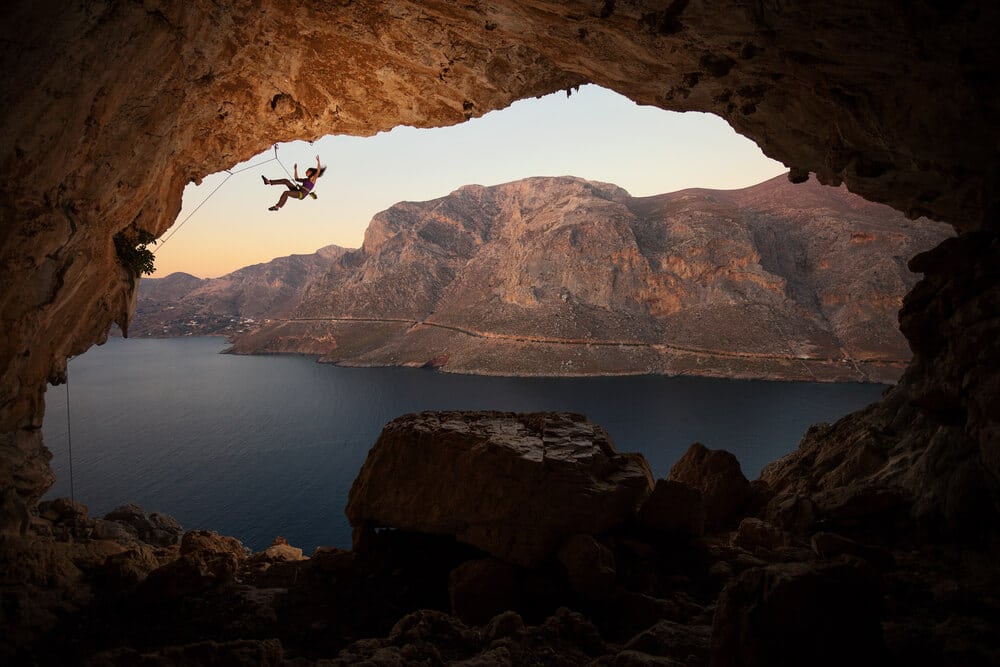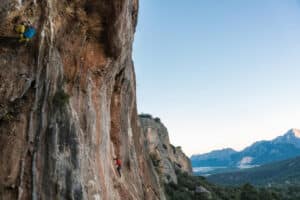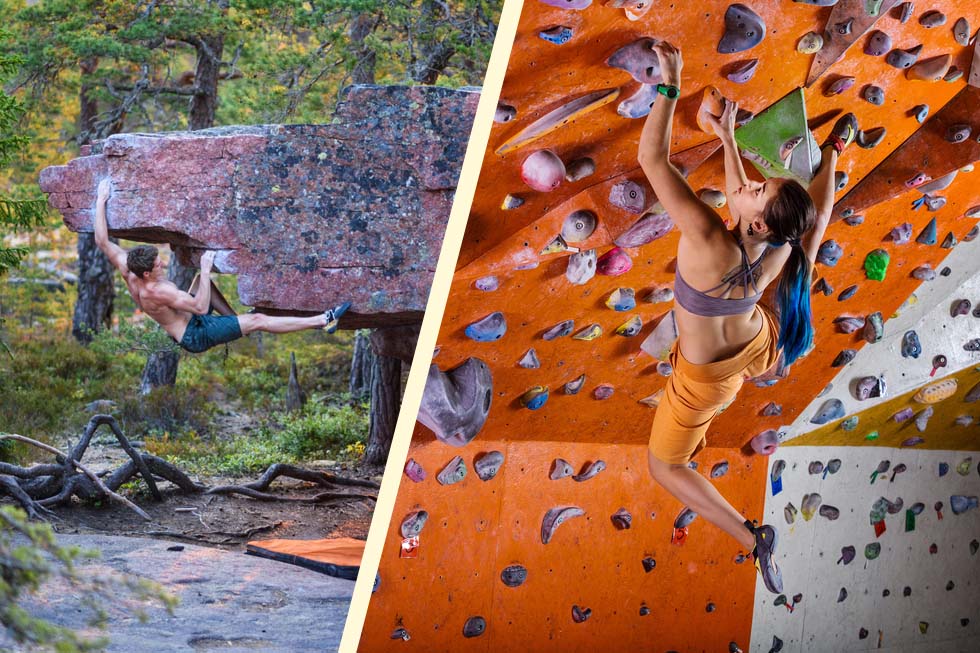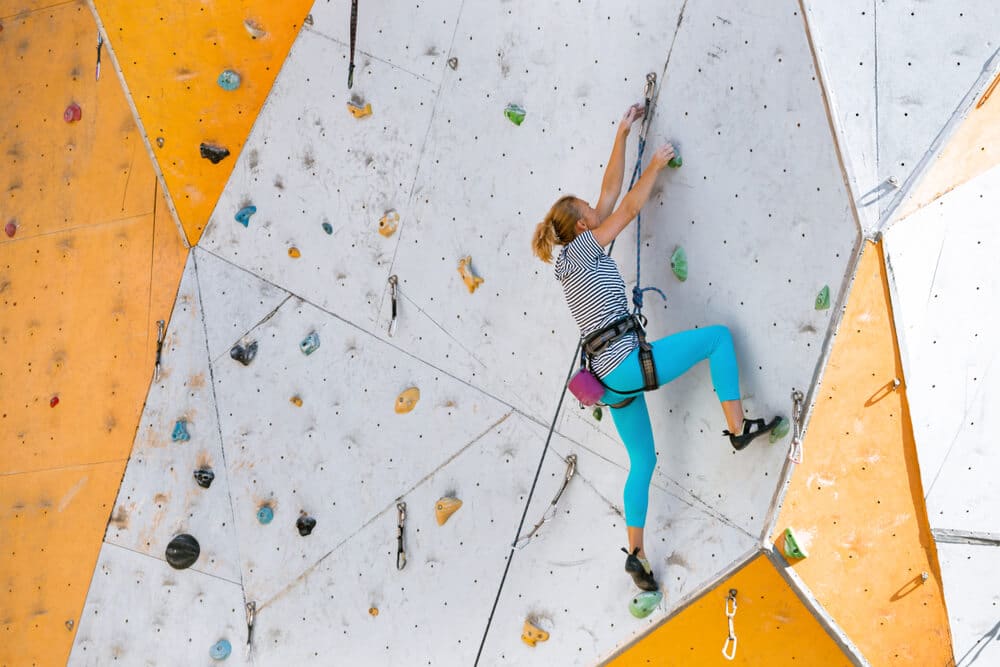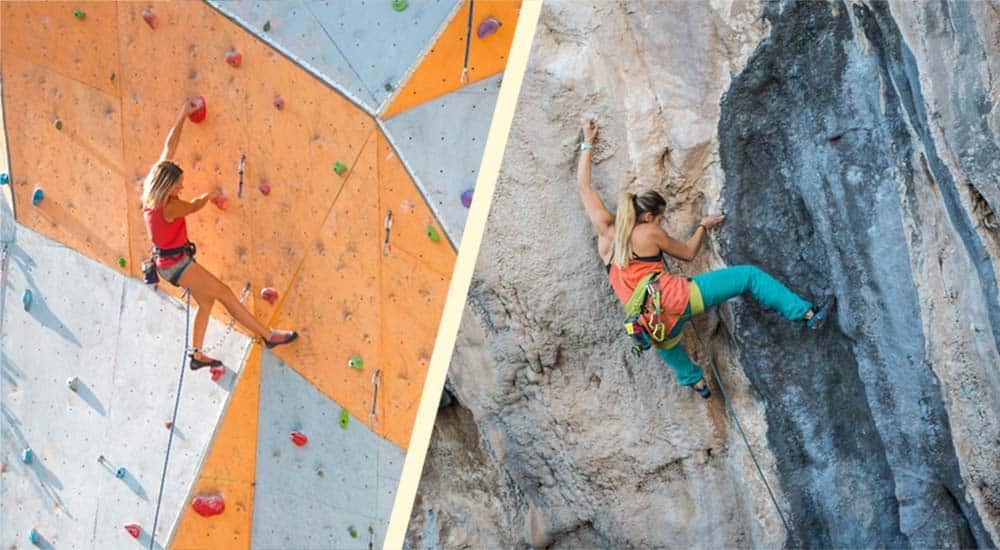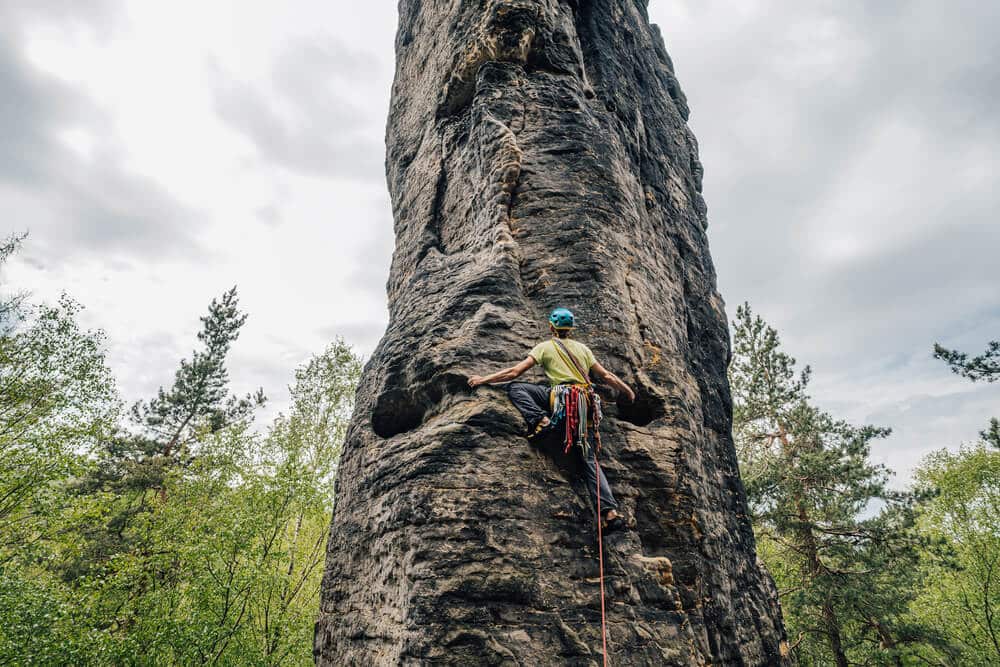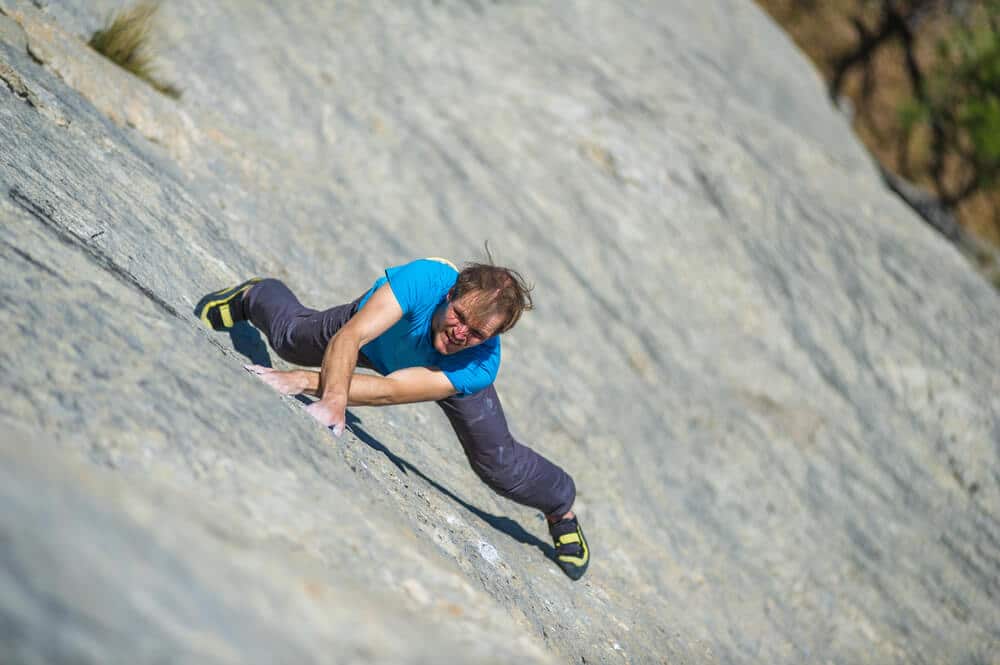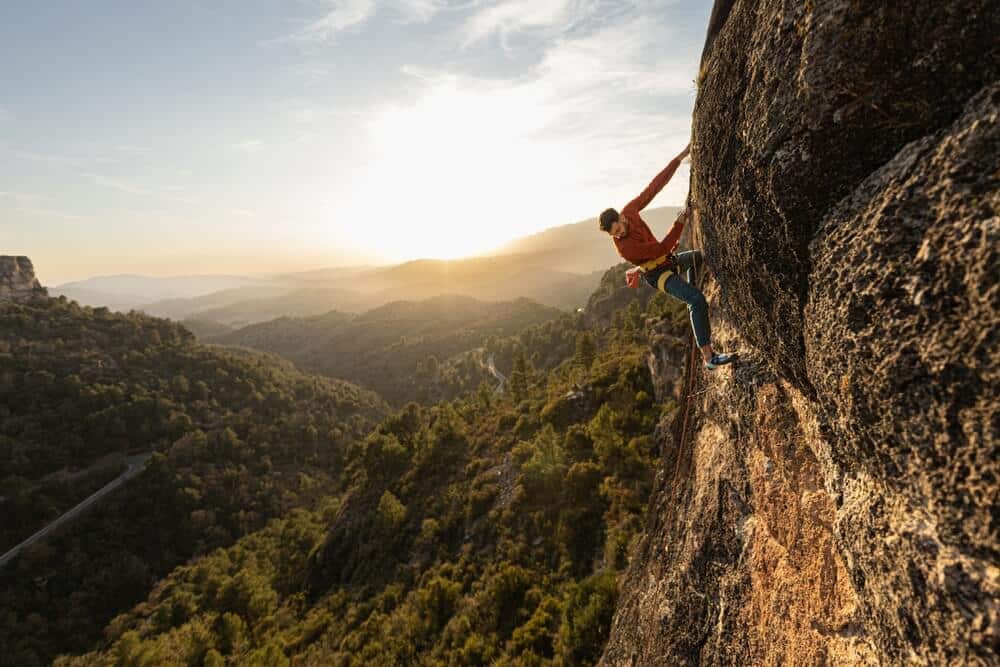If you’ve just started climbing, you might perceive it as an extremely dangerous activity. Although there are of course some inherent dangers and accidents do happen, rock climbing might not be as risky as you would think.
There are many dangerous things in our world, such as driving a car. Let’s see where rock climbing stands.
The Most Common Climbing Injuries
When you think of climbing injuries, you might think of dramatic climbing accidents or broken bones. However, by far the most common way to get hurt while climbing is to get an overuse injury! Most rock climbers will experience this at some point: one study found that 2/3 of male outdoor climbers had experienced a chronic overuse injury.
Most injuries of this type are related to the upper body extremities: things such as pulley injuries in the fingers, elbow tendinitis, or shoulder injuries such as strains and tears. These problems can happen to climbers of all skill levels, but experienced climbers who’ve been rock climbing for longer are more likely to have experienced an overuse injury.
Accidents and Acute Injuries
When most people think about the danger level of rock climbing, they’re thinking about deaths or incidents that result in acute injuries, not overuse injuries. Let’s dive into these types of rock climbing accidents and how often they occur.
Rock Climbing Versus Other Sports
Although scaling huge cliffs may seem far more risky than a game of soccer at your local park, studies have found that rock climbing is less likely to lead to an injury than sports such as basketball and soccer. Further, the injuries that do occur in rock climbing are, on average, less severe. However, it is important to note that deaths are more likely to occur with rock climbing than with more basic sports.
Not all types of rock climbing present the same level of risk. In general, outdoor climbing is more dangerous than climbing inside. In terms of serious injuries or deaths, you’re most likely to get hurt climbing ice or alpine routes. However, many accidents also occur on easier routes due to inexperienced climbers making mistakes, such as a climber not securing themselves properly when cleaning an anchor.
Risk Level by Climbing Discipline
The risk of acute injury also depends on the type of rock climbing you are participating in. Injuries can stem from different causes too:
- Fall related injuries
- Technical mistakes, such as rappelling off the end of ropes
- Injuries stemming from gear failure, such as popping a cam
Bouldering Risk Level
Bouldering is the discipline of rock climbing that’s least likely to lead to traumatic injuries, though the intense nature of the movements means that overuse injuries are common.
Traumatic injuries bouldering usually occur due to a bad fall, and can include sprained ankles, broken wrists, or dislocated shoulders.
Indoor Versus Outdoor Bouldering
When you’re bouldering, outdoor climbing is definitely more risky than bouldering in a climbing gym. Bad falls can happen in a gym, but there’s always plenty of padding in the gym, and boulders are usually set so as to not be conducive to an awkward fall.
Outdoors, the landing zone can be rocky or uneven, and in order to fall safely, you need sufficient crash pads and competent spotters. Plus, to stay safe, you need to be able to risk assess and be conscious of your own abilities.
For example, if a boulder has a high top out, you should be confident that the moves far off the ground are well below your limit so you can avoid falling when it isn’t safe to do so. All of these factors means there’s more room for human error in outdoor bouldering than indoors.
Sport Climbing Risk Level
Sport climbing is relatively safe, but it does present a higher level of risk than bouldering. The most common type of rock climbing accidents are roped falls where the climber is injured when they hit into the wall. This primarily occurs when a climber is lead climbing, though top roping accidents are not unheard of.
When sport climbers are injured while lead climbing, minor injuries are most common. The climber may slam into the rock wall too hard and hurt an ankle, or bruise or even fracture another part of their body. If a climber falls with their leg behind the rope while leading, they may get rope burn or flip upside down and hit their head into the wall: concussions are another potential sport climbing injury, especially if the climber is not wearing a helmet.
Besides falling accidents, the next most common type of sport climbing accidents are lowering and rappelling related. This includes things like a someone rappelling off the end of their rope.
Indoor Versus Outdoor Sport Climbing
Just like with bouldering, outdoor climbing is more dangerous when it comes to sport climbing. In the gym, bolts tend to be close together, while some outdoor sport climbs can be run out, causing huge falls. There’s also the risk of holds breaking outside, which can lead to unexpected falls and can also cause injury in the belayer: falling rocks can hit the belayer, which is especially dangerous if they aren’t wearing a helmet.
Minimizing Risk
So, how can you minimize risk while sport climbing? It’s important to have a good understanding of lead belaying, including how to give soft catches and how to prevent your climber from decking. Many climbers don’t understand the complexity of belaying. Make sure your climbing partner has this knowledge too! Always check that your belay device is loaded correctly, and double check your knots. Tie knots in the ends of your ropes to prevent incidents such as lowering off the end of the rope.
Trad Climbing Risk Level
Traditional rock climbing is more likely to lead to severe injuries than both sport and bouldering, primarily due to the fact that the you place your own climbing gear. Gear failure is a primary cause of trad climbing accidents, and even if you’re an experienced climber it’s important to be careful when placing gear.
If cams and nuts are placed poorly, or if the rock quality around the placement is poor, the gear can pop out if the climber falls on it. This can lead to a larger than anticipated fall, which can result in severe injuries. This is especially true if multiple pieces of gear fail, a phenomenon known as zippering.
Other Dangers
Although gear failure tends to be the primary fear of trad climbers, it’s not the only reason this discipline is more dangerous than others. Another factor is the terrain on trad climbs: especially on easier trad climbs or on multi pitches, you’re likely to encounter ledges, which can create unsafe falls. Since trad climbs tend to be less traveled than sport climbs, you’re also more likely to encounter loose rock or rock fall.
Additionally, in contrast to sport climbs, where bolts are placed at regular intervals, when you’re trad climbing you can only place gear where the rock allows. Depending on the terrain, this can sometimes mean that you’re forced to run out a climb, especially if you don’t own specific pieces of gear. This can create the risk of large falls, which can lead to injury.
Risk Level of Other Types of Rock Climbing
Technically, free solo climbing is the discipline most likely to lead to serious injury or death. If you free solo climb, you’re putting yourself in extreme danger, since any fall will lead to at least serious injury. It’s a rare discipline of rock climbing, but climbers throughout the years have passed away while soloing.
Besides free soloing, ice and alpine climbing are the most dangerous forms of rock climbing. Both of these disciplines have a higher risk of gear failure, as well as rock fall and risky terrain. Mountain conditions can also lead to problems such as hypothermia, starvation, or high altitude sickness.
Serious Injuries and Deaths
Minor injuries are by far the most common result of a rock climbing accident, but if you are serious about wanting to climb safely, you might be wondering about the severe injuries and even deaths that can occur due to participation in the sport. So, what do the numbers say?
- Rock climbing deaths per year: estimates vary, but there are likely around 20-50 each year in North America.
- This might seem like a lot, but it’s actually extremely rare. Consider that an average of 28 people die each day from drunk driving, and that’s just in the United States.
- Only 10% of all mountain accidents are rock climbing related– more people are hurt doing other activities such as hiking (though keep in mind that many more people go hiking than rock climbing).
- Most climbing accidents lead only to minor injuries. In terms of serious injuries, if you’re a rock climber you have a 1 in 2,000 chance of being admitted to the emergency room in a given year. That’s only a 0.05% chance!
- If you do happen to be one of those unlucky climbers that goes to the ER, the most common type of injury you’d present with would be either a fracture (27%) or a sprain or strain (26%).
- Most serious rock climbing related injuries occur in the lower limbs (47%); upper extremity injuries account for 25% of climbing-related ER admissions.
- Most climbers (60%) who go to the ER were injured in a fall.
Conclusion: Know the Ropes!
Rock climbing is, to some extent, inherently dangerous, and the possibility of severe injury or even death is present. However, with good risk management, climbing can be very safe. Different disciplines present different levels of danger, so it’s important to understand that you’re taking more risks if you go multi pitch trad climbing than if you boulder, and outdoor climbing presents a higher risk level.
Remember that no matter how experienced you are, there are always things you can be doing to prioritize your safety. Never forget safety checks when climbing with ropes, and learn how to fall properly. Make sure you’re double checking your systems, and make sure that newer climbers understand everything they need to know to stay safe. Avoid risky behavior like drinking at the local crag or bouldering without a crash pad. Then, when someone asks you “How dangerous is rock climbing?” you can safely tell them it’s generally safer than many common sports!
Sources
- Your Local Crag Is More Dangerous than You Think
- Drunk Driving Statistics 2024
- Climbing Accidents
- Rock Climbing Injuries Treated in US Emergency Departments, 2008–2016
- Evaluation of Injury and Fatality Risk


